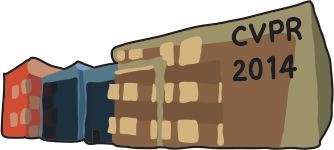-
Can We Use Second Minor Finger Knuckle Patterns to Identify Humans?
AbstractHuman hand possesses some of the most distinctive anatomical features which have been extensively used for the biometrics identification. However there are several hand features which results from complex interaction among bones, muscles, skin and tissues (therefore these are expected to be anatomically unique to individuals) which remain relatively unexplored for their potential in biometrics especially for forensic applications. This paper explores the possibility of using lowest finger knuckle patterns formed on the joints between metacarpal and the proximal phalanx bones for the biometrics identification. We automatically segment such region of interest from the hand images and normalize/enhance them to accommodate illumination, scale and pose variations resulting from the contactless imaging. The normalized knuckle images are used to match using several matchers popular in the literature. We use database of 110 different subjects acquired from the contactless hand imaging to ascertain the performance. We also evaluate the performance from matching of such lowest finger knuckle patterns using two session data acquired after an interval of at least two years. The experimental results are very encouraging and demonstrate potential of such unexplored finger knuckle patterns for the biometrics applications.
Related Material
[pdf][bibtex]@InProceedings{Kumar_2014_CVPR_Workshops,
author = {Kumar, Ajay and Xu, Zhihuan},
title = {Can We Use Second Minor Finger Knuckle Patterns to Identify Humans?},
booktitle = {Proceedings of the IEEE Conference on Computer Vision and Pattern Recognition (CVPR) Workshops},
month = {June},
year = {2014}
}
These CVPR 2014 workshop papers are the Open Access versions, provided by the Computer Vision Foundation.
Except for the watermark, they are identical to the accepted versions; the final published version of the proceedings is available on IEEE Xplore.
Except for the watermark, they are identical to the accepted versions; the final published version of the proceedings is available on IEEE Xplore.
This material is presented to ensure timely dissemination of scholarly and technical work.
Copyright and all rights therein are retained by authors or by other copyright holders.
All persons copying this information are expected to adhere to the terms and constraints invoked by each author's copyright.

